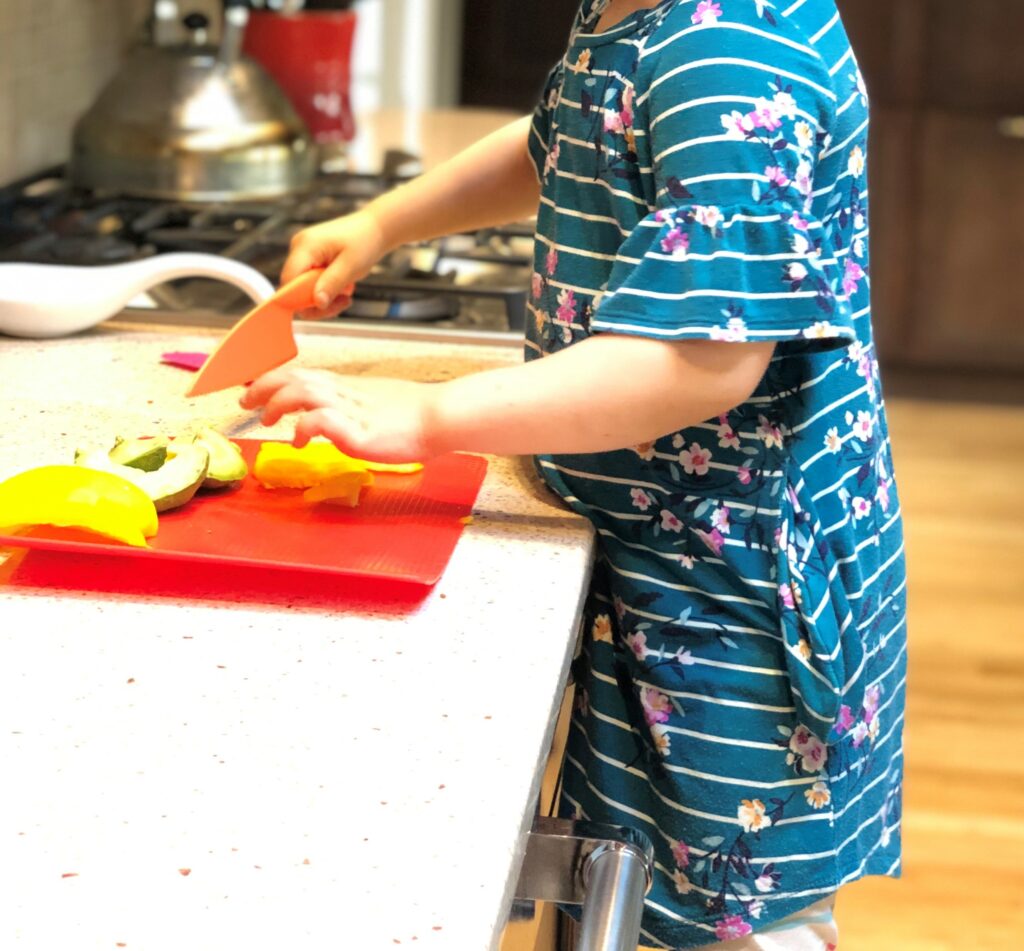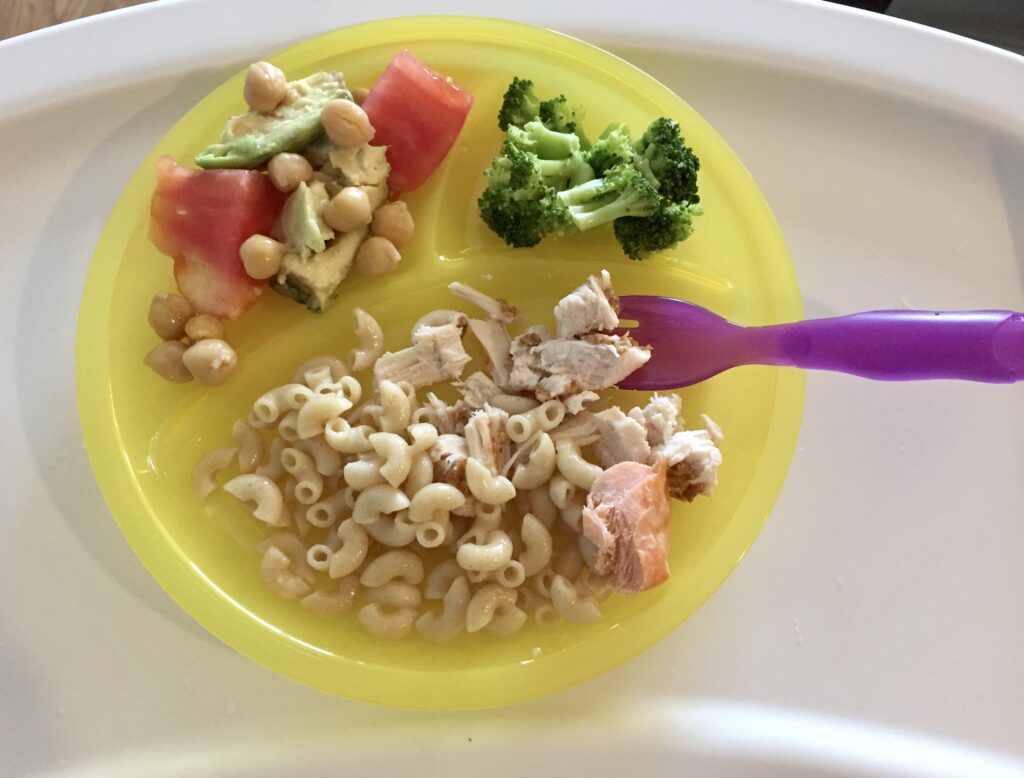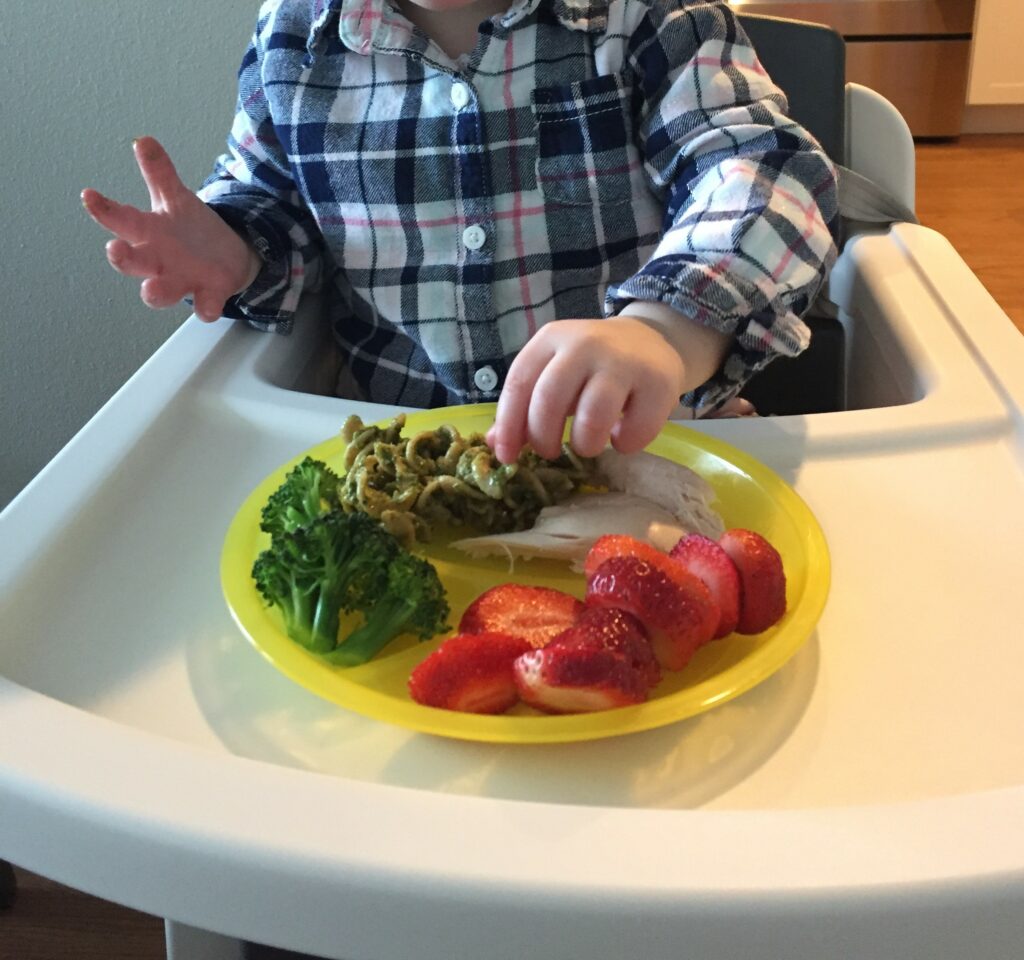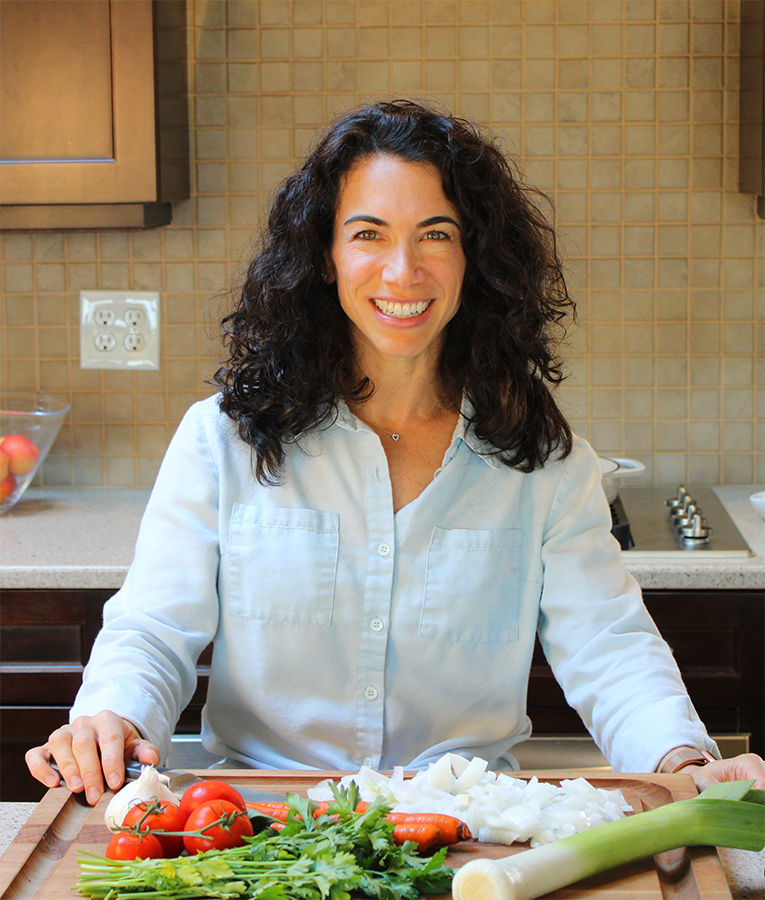Wearing my pediatric dietitian hat, I want to talk about a question I often hear from my clients and friends, which is— “how can I get my kids to eat more of <enter food of choice>”
Parents are struggling. Whether it’s getting kids to eat more vegetables, or the meal we worked so hard to create, or the fish that our family likes, meal time can sometimes feel like a huge battle. In this post, I help you follow the guidance of childhood nutrition expert, Ellyn Satter, MS, MSSW.
Would you prefer to listen to a transcript of this blog post? Check it out here:
Overview
It is really hard when you prepare something and your kids won’t even look at the food let alone try it. I know. I’ve been there! There are a few things we can do and I provide three tips below to get your started.
Tip #1: Reframe
Instead of “getting kids to eat” let’s reframe it as “giving kids skills to eat.”
So what does this mean – as much as it is our job to help our kids “get important nutrients,” it is equally our job to allow them the autonomy to explore new foods and to do so in a low pressure environment.
Just as we want to help our children through frustrating tasks that they have a hard time completing — like tying shoes or doing homework, right if we do it for them, then, they aren’t learning anything.
But if we role model HOW to tie our shoes or what questions they want to ask themselves when doing homework, then we’re really giving them the chance to be proud of something they’ve done all on their own.
That is what confidence looks like.
Confidence exists when kids are learning to eat unfamiliar foods and it also exists when they’re expected to sit at the table and learn what it means to enjoy good conversation while eating. They need to learn all of this with our help in role modeling that behavior.
So let’s reframe this idea of “getting kids to eat food” with GIVING kids a growth opportunity to gain confidence in this area of eating food. Much like riding a two-wheeler or any other independent task, we are teaching our children self-mastery.
Tip #2: Offer at Least One Food They Like at Meal Times
Tip number two, as it relates to meal time success, is to ensure kids are getting at least one food they enjoy eating at every meal and snack.
This is a win-win for everyone because then kids have the security of knowing there won’t ever be a meal or snack where they have to feel worried about food.
They WILL eat and they WILL get what they know AND THEY WILL ALSO GET TO TRY new foods being offered during that meal or snack at their desired pace.
I like employing this strategy because then, our family can still keep on cooking the things we like to eat knowing that everyone will still be able to get what they need at meal times. One thing I should mention here – you don’t need to make two meals for this to work. Parents often ask me – well how can I do this if Jimmy only eats chicken nuggets or cheerios?
So this is where we want to think through something called keeping with THE SPIRIT OF THE MEAL so that your child isn’t singled out and eating pasta with butter while the rest of the family is eating shrimp stir-fry with rice.
There IS a way with every meal to find something inherent in that meal that everyone can enjoy. Your child has an ability to learn to love new foods – we need to keep exposing them to new foods with the safety net of having foods they already know and love.
Tip #3: Structure
Tip number three is providing predictable times of the day where children can get a chance to fill their bellies. We don’t want kids worrying about when their next meal will be.
At the same time we don’t want it to be a free for all where they graze all day and eat whatever they want whenever they want it. We wouldn’t let them spend money whenever they wanted to buy something so let’s also set good practices around predictable meal and snack times — plus this helps at meal times when we really do want kids starting to try new foods. They won’t do that if just an hour before dinner they chugged a whole cup of milk and had a Z-bar.
Putting this Into Practice
So let me give you an example to help you apply all of this. You’ve just made a great dinner and now you’re hoping the family eats it. You have some broccoli, some rice, and a yummy protein like chicken or salmon or plant based protein like lentils or beans, and your child, only wants the rice.
So here’s the classic move we do — if you eat more broccoli you’ll get more rice. Or if you eat your chicken you’ll get some dessert. It’s tempting – especially if you see immediate positive results from this approach.
But every time we pull something like this we are chipping away more and more at an opportunity for children to really listen to their internal cues. Children are born with the ability to know how much to eat. They are capable of self regulation right from the beginning – so our job is to just let them do this job.
Division of Responsibility by Pediatric Dietitian
Elllyn Satter – known in the nutrition world for her work in childhood feeding and now competent eating – changed my life when I read her book back when I was a nutrition student.
I will never forget the moment when I read what she calls “the division of responsibility.” Maybe today is your first time hearing about the division of responsibility but even if it isn’t it begs repeating which is that (1) the parent or caregiver is responsible for what and when and (2) the child is responsible for how much or whether or not to eat.
So the parent is responsible for the what – the menu and the when – the mealtimes. And the child is responsible for how much food they want to eat of that menu at that time and whether to even eat it at all.
My Own Family
It seems so simple but soooooo hard to do in practice. I know. Trust me. I have two kids and they each have been raised using this exact framework and I never knew if I was “doing it right” especially when one of my kids continued to and still does shows immense caution in the face of new foods, and the other one dives into each meal with pure wonder and curiosity.
Does this mean this isn’t the right approach? Not at all. I still think that giving your child the chance to explore new foods when THEY are ready and deciding how much or whether or not to eat — this is a gift.
This is a GIFT.
It might not feel like you’re giving them a gift when all they’ve eaten for dinner was that rice you served and a little milk but here’s the thing – if they listened to their bodies and you’re using this framework and providing consistent chances for the child to eat throughout the day, chances are your child has consumed what they needed at that particular meal. And what’s more, you are setting up the environment for them to become confident in their ability to listen to their bodies and learn to love the foods your family serves.
Additional Support from a Pediatric Dietitian
Go check out my Family Nutrition Counseling page for more info about how I help kids and families with their everyday nutrition, and don’t forget to like share or comment below if what you read today resonated.
Have a great day!






0 Comments